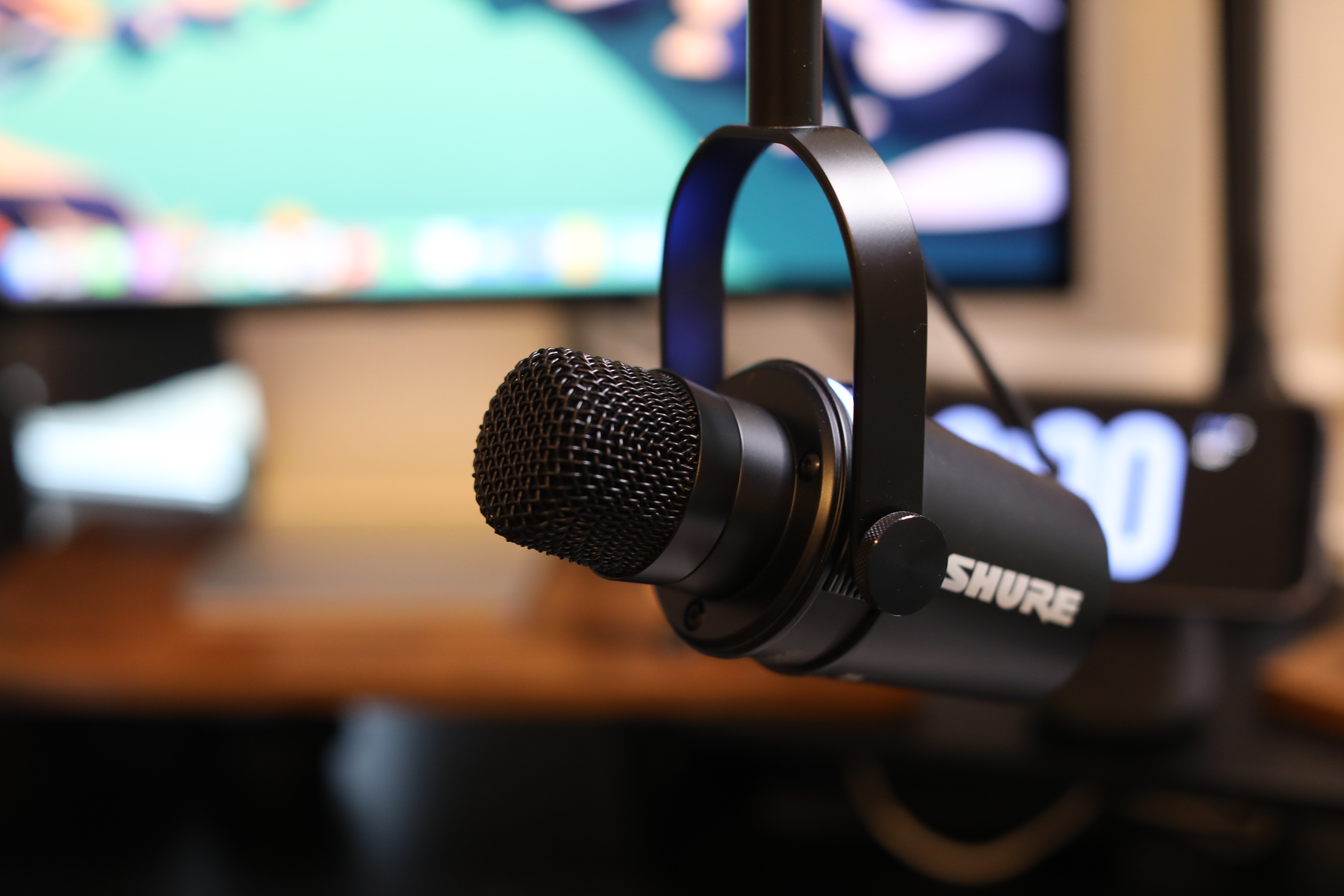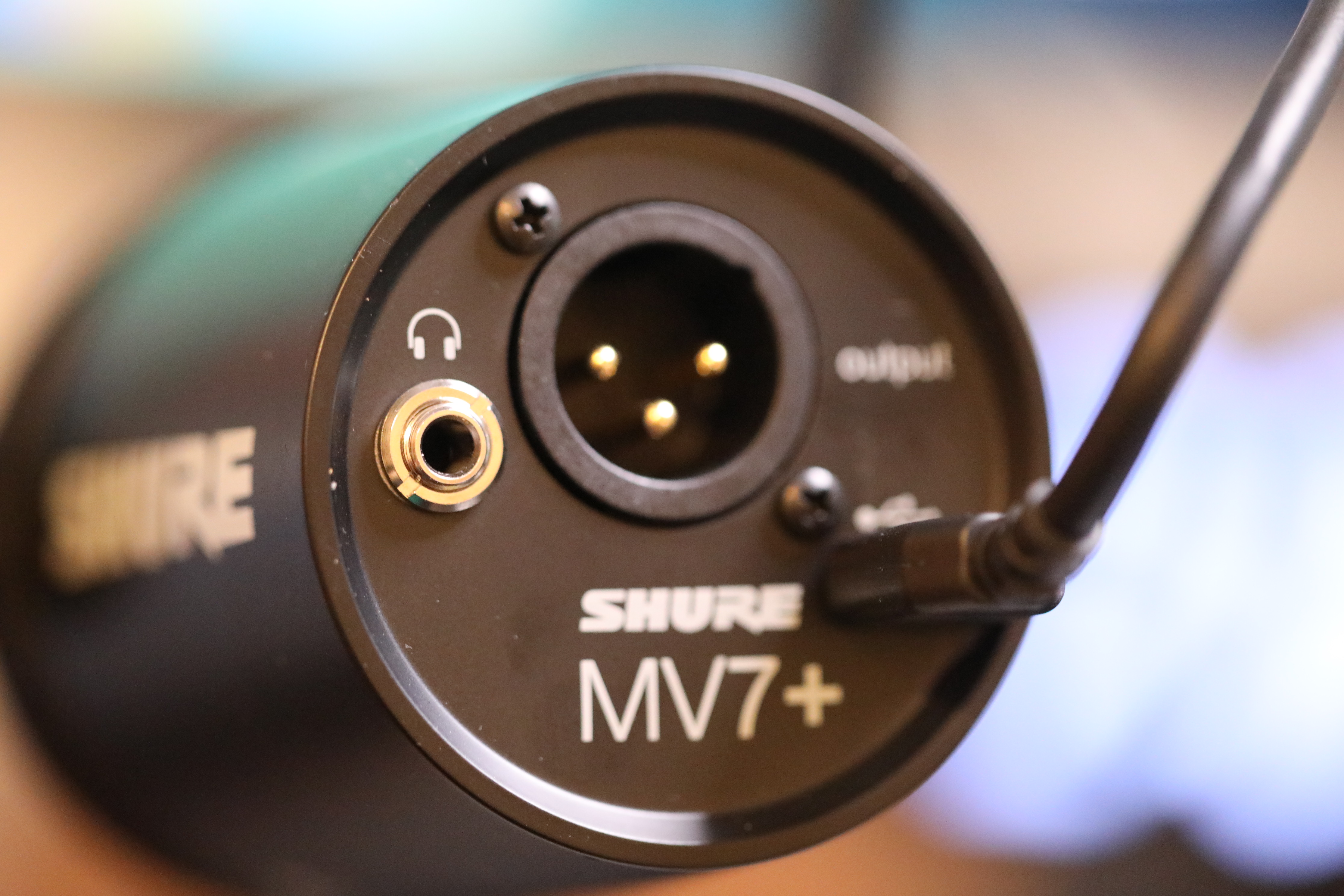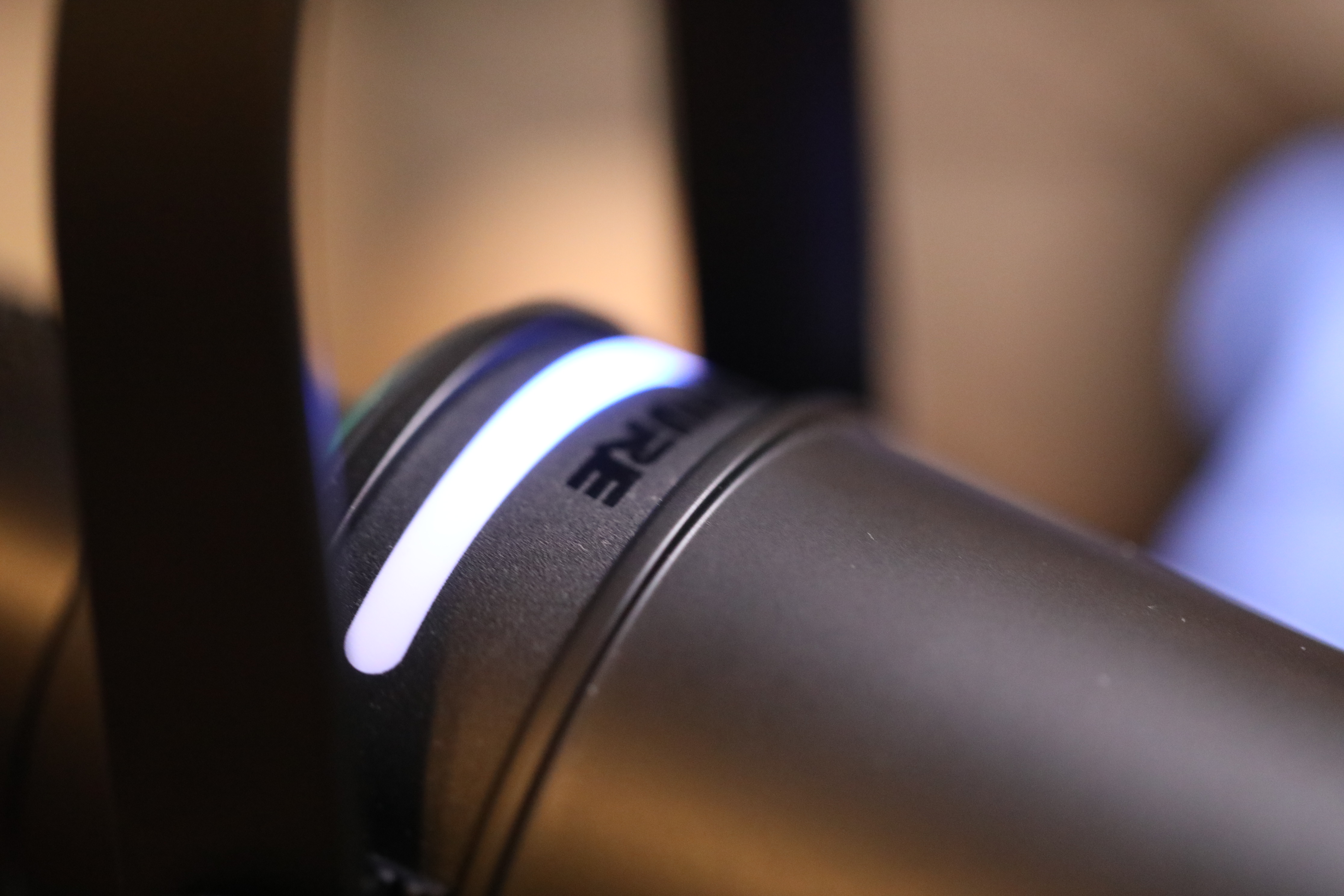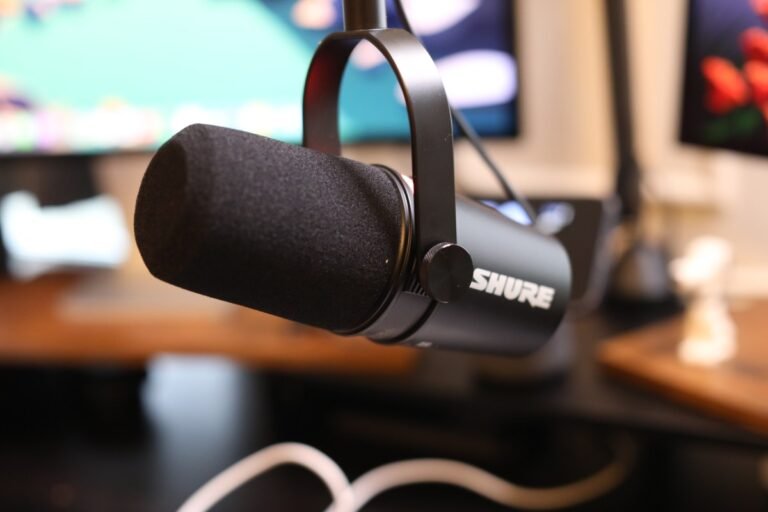I was happy — excited, even — to check out Shure’s latest USB microphone. Its predecessor, the MV7, has been my default podcasting microphone since it was released in late 2020. I’ve recorded over 100 episodes my show for that matter — not to mention using it for meetings, social engagements and even telehealth visits.
If you’re looking for a desktop mic for podcasting or streaming, and don’t mind investing a little cash, but don’t want to deal with a separate audio interface (note, there’s also built-in XLR if that’s your thing), you’d be hard-pressed to beat the MV7 — until now, that is.
As the name suggests, Shure’s MV7+ doesn’t represent a huge departure from its predecessor. If you asked me sometime in the last year and a half to recommend a USB microphone, I probably recommended its predecessor. If you took my advice that time, don’t worry. The new hardware doesn’t show enough variance to suggest an upgrade at this stage. More than anything, the MV7+ is the refinement of an industry-leading microphone.
Image Credits: Brian Heater
Honestly, I was a little surprised when Shure reached out to offer the new microphone for review. It’s a (relatively) quick follow-up to a well-received product. That’s not to say the MV7 didn’t have its drawbacks, of course. In fact, there was a glaring issue with the product. It’s the first question I asked the company when it told me the new product was coming.
Yes, the MV7+ has USB-C. It was, frankly, strange that a $300 or so device launching in late 2022 didn’t. With daily use, this oversight was more of a nuisance. But the more I used the product as a daily driver, the more pronounced the problem became. I am my own podcast producer. This generally isn’t a huge problem for the shows I record, but every once in a while, something will happen to the audio quality and I won’t be able to respond in real time as I’m too focused on the conversation.
It took me a while to figure out why my audio quality suddenly went into the fritz for a few episodes. It turns out that the micro-USB cable is broken. Upon closer inspection, the wire was starting to separate at the plug. I invested in a longer, braided micro-to USB-C cable to fix the problem, but the damage was already done for these episodes. Looking online, it seems I’m not the only person having this problem.


Image Credits: Brian Heater
I haven’t had any accidental disconnects with the MV7+ — though, of course, I’ve only been using the mic for a few weeks at this point. That said, USB-C cables are generally sturdier and more durable than their predecessors, and generally better suited to the kinds of wear and tear a cable will go through when attached to something like a microphone boom. Of course, if robustness is your only concern, both systems also support XLR cables, for those who want to go an extra step beyond plug and play functionality.
As for the sound, I’ve been quite happy with the MV7+. I inadvertently put the mic to the ultimate test last week when I had a producer Don was on my show. The guy has produced some of the all-time greats, including Dylan and the Stones, runs the legendary Blue Note Records, and has a hit or two of his own on the mic. Of course, his first question was which microphone I was using. Instead, he asked if it was the SM7B — Shure’s beloved vocal microphone, which has become something of a gold standard in the podcast world.


Image Credits: Brian Heater
The two microphones are quite similar, although the USB version is a bit more compact. This is not to say that the MV7+ competes with the SM7B when connected via USB. The more traditional mic has a richer, warmer tone — there’s a reason many people consider it the best. You can get close to the MV7+ when connected via XLR. The truth is, however, that Shure microphones are not designed to compete with each other.
The MV7+’s real competition is other USB microphones. This is where it really shines, as a plug-and-play device for the proliferating hobbyist podcasters and streamers out there. The mic sounds great out of the box, and while it has EQ settings beyond the input volume, you have to dig around to access them. While this may sound like a knock against the product, the truth is that some of the biggest audio problems in podcasting are a product of having settings that are too easy to access.
Blue microphones provide a great example of this. So many recordings on these systems are audible worse rather than a built-in microphone, due to dealing with gain and other settings. It’s nice that the Snowballs have multi-directional recording and all that jazz, but if you’re looking for a desktop mic for remote recording, something unidirectional like the MV7+ will serve you well. After fiddling with it for a while, you can always take the next step and choose an XLR interface.
Searching for settings here requires downloading the Shure Motiv Mix software. The interface is quite simple. Everything is automatic by default — that includes gain, tone (dark to light), and reverb. You can flip any of these to manual and adjust the slider accordingly. Also new is a ‘pop stopper’ feature, which algorithmically protects against explosives – sounds like ‘p’ and ‘b’ – that cause expelled air to hit the microphone diaphragm. The feature isn’t perfect, but I found it worked well enough (when combined with the foam cover) to allow me to remove my cumbersome windshield.


Image Credits: Brian Heater
Motiv Mix gives control to another new feature: the LED lights up, which replaces the MV7’s touchscreen. It’s clear the company is specifically targeting streamers with the feature, which brings a small, customizable rainbow strip. By default, you can toggle between pulse, solid, and live, the latter of which pulse is based on the audio input. There are four default color palettes, along with an option to create a custom one. Settings will still be saved in the microphone firmware after disconnection.
I stick with the relatively neutral blues of ‘Space’. I don’t stream games on Twitch or anything, so my preference is something that doesn’t draw attention. I do like the single tap to mute, though, and the fact that its red glow is hard to miss (I’ve still managed to forget I’ve muted myself on occasion, such is the human condition).
Additional options include a digital “denoiser” for removing unwanted sounds and a “monitor mix” for when your headphones are connected to the microphone to check your levels (which I should do more often).
Shure’s MV7+ is now available in black, priced at $280 — a $30 premium over the MV7. It’s expensive compared to other USB microphones, but it’s hard to beat.
This story has been updated to correct the MV7 release date from 2022 to 2020.
